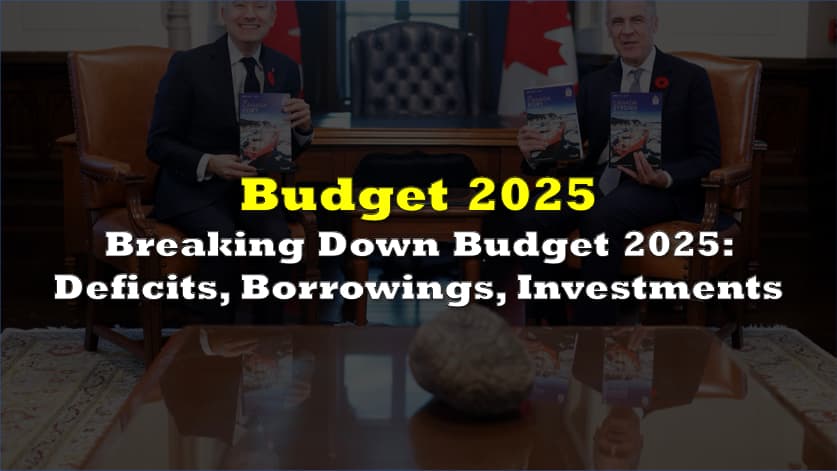We're loading the full news article for you. This includes the article content, images, author information, and related articles.
Prime Minister Mark Carney's first budget prioritizes massive capital spending to shield Canada's economy from escalating US protectionism, a policy with potential ripple effects for global trade stability relevant to Kenya and other export-oriented nations.

OTTAWA - Prime Minister Mark Carney’s government unveiled its first federal budget on Tuesday, November 4, 2025, proposing major spending initiatives to insulate the Canadian economy from the escalating trade conflict with the United States. Presented by Finance Minister François-Philippe Champagne, the budget projects a C$78.3 billion deficit for the 2025-2026 fiscal year, framing it as a necessary investment in Canada's long-term resilience.
The fiscal plan, titled “Building Canada Strong,” commits C$280 billion over five years to capital investments in infrastructure, defence, and measures to boost productivity and competitiveness. In his address to the House of Commons, Minister Champagne stressed that the country faces “a time of profound change” requiring “bold and swift action” to navigate geopolitical uncertainty and ongoing trade tensions. The government aims to reduce the deficit to C$56.6 billion by the 2029-2030 fiscal year.
The budget is a direct response to significant tariff measures imposed by the United States earlier in the year. On February 1, 2025, the U.S. administration initiated a trade war by imposing a 25% tariff on most Canadian goods and a 10% tariff on energy products, citing national security concerns under the International Emergency Economic Powers Act (IEEPA). These levies were subsequently increased on August 1, 2025, with the general tariff on non-USMCA-compliant goods rising to 35%. Specific sectors, such as steel and aluminum, have faced tariffs as high as 50%.
These protectionist measures have already had a tangible impact on the Canadian economy. Real GDP growth for 2025 is now projected to be just over 1%, a sharp decline from the 2% forecasted before the trade conflict intensified. Canadian exports to the U.S., particularly in the steel, aluminum, and automotive sectors, have fallen sharply. This has led to job losses, with manufacturing employment down by 55,000 since January 2025, according to a June report. The Bank of Canada has noted that the “pervasive uncertainty” is restraining both consumer spending and business investment.
To counteract these headwinds, the budget outlines several key initiatives. These include a new “productivity super deduction” to encourage business investment, enhancements to the Scientific Research and Experimental Development (SR&ED) program, and expanded tax credits for the clean economy sector. The government also plans to find C$60 billion in savings over five years, partly by reducing the size of the federal public service by approximately 28,000 positions through attrition and a comprehensive expenditure review. Despite these cuts, the Carney government has pledged to maintain funding for key social programs established under the previous administration.
While the direct trade relationship between Canada and Kenya is modest, the escalating U.S.-Canada trade war carries significant indirect implications for the East African region. The conflict between two of the world's largest trading partners introduces volatility into the global economic system, potentially impacting commodity prices and supply chains that affect Kenyan exporters.
Furthermore, the broader trend of protectionism, exemplified by the U.S. tariffs, poses a long-term risk to export-dependent economies like Kenya's. The weakening of established trade norms and institutions could create a more challenging environment for countries seeking to expand their access to international markets. The dispute underscores the vulnerability of even deeply integrated economies to sudden shifts in trade policy, a cautionary tale for nations navigating their own bilateral and multilateral trade agreements.
The Canadian government's strategy of using fiscal stimulus to counter external trade shocks will be closely watched by policymakers globally. If successful, it could offer a model for other nations facing similar pressures. However, the significant increase in Canada's national debt—which stood at US$1.52 trillion in March 2024—highlights the potential costs and risks associated with such a strategy. The success of Canada's ambitious plan will depend on its ability to attract substantial private investment and stabilize its economy amidst persistent global uncertainty.
Keep the conversation in one place—threads here stay linked to the story and in the forums.
Other hot threads
E-sports and Gaming Community in Kenya
Active 7 months ago
Popular Recreational Activities Across Counties
Active 7 months ago
The Role of Technology in Modern Agriculture (AgriTech)
Active 7 months ago
Investing in Youth Sports Development Programs
Active 7 months ago